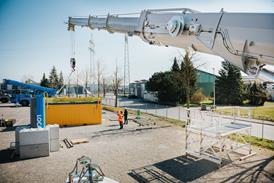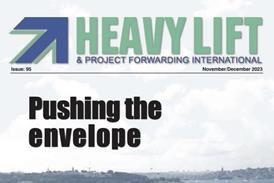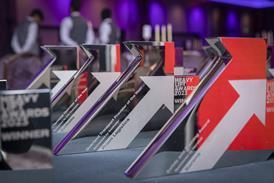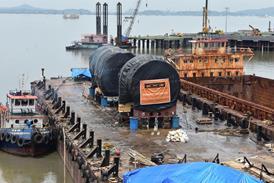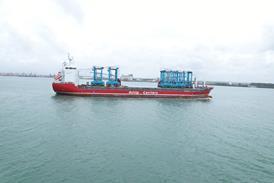In 2017, new environmental regulations for the shipping industry came into force or were finalised, and progress was made on the future regulatory landscape for the sector. This year has already continued the development of a greener shipping industry.
%20(Large)-max-w960.jpg)
Alongside the Ballast Water Management (BWM) regulations, which entered into force in September 2017, the Sulphur Cap 2020 has dominated international maritime industry debate over the last few years. The parlous state of the global shipping industry at present has seen many calling for the postponement of the latter’s implementation, given the substantial capital expenses required to meet both conventions.
Compliance with the BWM standards is required at a ship’s first or second Oil Pollution Prevention Management (BWM) regulations Certificate (IOPP) renewal survey, after September 2017, subject to certain conditions. This allows existing vessels to continue operated without a retrofitted ballast water treatment system until as late as 2024, depending upon the particular timeline of their IOPP surveys - up to two years later than previously allowed.
While a two-year postponement of the implementation of the BWM convention was agreed, doubts have been raised about a similar postponement of a 0.5 percent global sulphur cap, meaning ship operators will need to decide about their preferred compliance strategy.
There is no one-size-fits-all....
-Eirik Nyhus, director of environment at classification society DNV GL
According to Eirik Nyhus, director of environment at classification society DNV GL, this decision will have significant operational and financial implications. “There is no one-size-fits-all solution on the table; scrubbers, LNG and ‘hybrid’ fuels are all realistic options, but the vast majority of vessels are expected to default to MGO [marine gas oil].”
Nyhus added: “Local availability issues and price volatility are expected as consequences of a dramatically changed fuel demand situation as of January 1, 2020. A significant number of non-compliance cases are likely to occur in a transitional period. Once supply and demand reach a new equilibrium, the situation should ease, but the transition will be a bumpy ride nevertheless.”
CO2 emissions goal
Meanwhile, the shipping industry has adopted an ambitious CO2 emissions goal, part of the shipping industry’s contribution to emission reductions in response to the Paris global climate accord of 2015.
Delegates at the IMO’s MEPC 72 meeting, held in April 2018, agreed on a GHG reduction strategy that aims to reduce emissions by at least 50 percent by 2050, compared with 2008 levels, while pursuing efforts towards phasing them out.
The International Chamber of Shipping (ICS) has welcomed the high-level strategy.
This is a ground-breaking agreement – a Paris Agreement for shipping – that sets a very high level of ambition for the future reduction of CO2 emissions.
-Peter Hinchliffe, ICS secretary general
“This is a ground-breaking agreement – a Paris Agreement for shipping – that sets a very high level of ambition for the future reduction of CO2 emissions,” said Peter Hinchliffe, ICS secretary general.
“We are confident this will give the shipping industry the clear signal it needs to get on with the job of developing zero CO2 fuels, so that the entire sector will be in a position to decarbonise completely, consistent with the 1.5 degree centigrade climate change goal.”
While some governments would have preferred to see the adoption of even more aggressive targets, the ICS believes a 50 percent total cut by 2050 can realistically only be achieved with the development and very widespread use of zero CO2 fuels. Therefore, the wholesale switch by the industry to zero CO2 fuels should follow.
The Baltic and International Maritime Council (BIMCO) has also praised the strategy, describing the target as ambitious, but not impossible. Lars Robert Pedersen, BIMCO deputy secretary general and delegate at the IMO meeting, said: “The IMO has done something no one has done before: set an absolute target for emission reductions for an entire industry. It is a landmark achievement in the effort to reduce emissions, and something that every other industry should look to for inspiration.”
Realistic goal
BIMCO sees zero carbon emissions as a realistic goal for the second half of this century, but investments in research and technology are required to get there.
Speaking at the Singapore Maritime Technology Conference in April 2018, Argyris Stasinakis, a partner with ship tracking intelligence company MarineTraffic, explained that more information exchange between shipowners, shippers, ports, equipment manufacturers and IT companies is required to meet the ambitious reduction targets.
“Reducing shipping’s environmental footprint is not just about fuel choice and vessel design. It is about deploying our assets intelligently. This can only be done if the industry is able to build a common approach to data standards and be more prepared to share this data. If we are to unlock the potential contained in the vast quantities of official and validated crowd-sourced information generated by shipping, we need to take a more open approach,” said Stasinakis.
For Roger Strevens, head of sustainability at Wallenius Wilhelmsen, the establishment of CO2 reduction goals, with a link to the Paris Agreement, is the only way forward for the industry.
“The most newsworthy aspect of the strategy concerned is its ‘levels of ambition’. The target includes consideration of the growth in the industry in the meantime. Estimates on industry growth up to 2050 vary, but it is reasonable to expect that carbon intensity, which is essentially the same as fuel efficiency, will need to improve by over 80 percent. There are currently no proven and viable technologies that could achieve such an improvement for deepsea vessels in global operation, which brings the need for a massively scaled up and coordinated approach to research and development into sharp focus.”
According to Strevens, the strategy has set the basis for further regulatory development, but does not define what measures will be implemented. “The process for choosing what measures will be implemented will begin in earnest at IMO in October.”
Stricter regulatory landscape
Arne Hubregtse, managing director of BigLift Shipping, welcomed the stricter regulatory landscape. “We are certainly not concerned by the more strict regulations, we support them,” he stated. “They will help to reduce the environmental impact of shipping. We are investing in ballast water treatment systems and exhaust cleaning systems for existing and newbuild vessels. By other means we are trying to reduce CO2 emissions. Our only concern in this respect is the enforcement of these regulations around the world, and thus creating a level playing field.”
As the outlook for the breakbulk and project cargo sector continues to look positive in 2018, with further recovery in the multipurpose shipping sector forecast, the greening of the industry will likely have a positive impact on the global fleet.
Susan Oatway, lead analyst for the multipurpose sector at shipping consultancy Drewry, said the optimistic forecast for the sector is based on rising demand trends, contracting vessel supply and lessening threats from competing sectors.
While demolition levels are still historically low, the multipurpose fleet is contracting as older, smaller, less heavy lift- capable tonnage is scrapped. The new IMO rules on emissions and ballast water will encourage this trend, moving the overall vessel supply closer towards balance. Although, Oatway added: “We have some way to go before we are free of this overtonnage situation.”
This article is taken from HLPFI’s May/June 2018 Ships and Shipping Lines supplement. Find out more about subscribing here.



